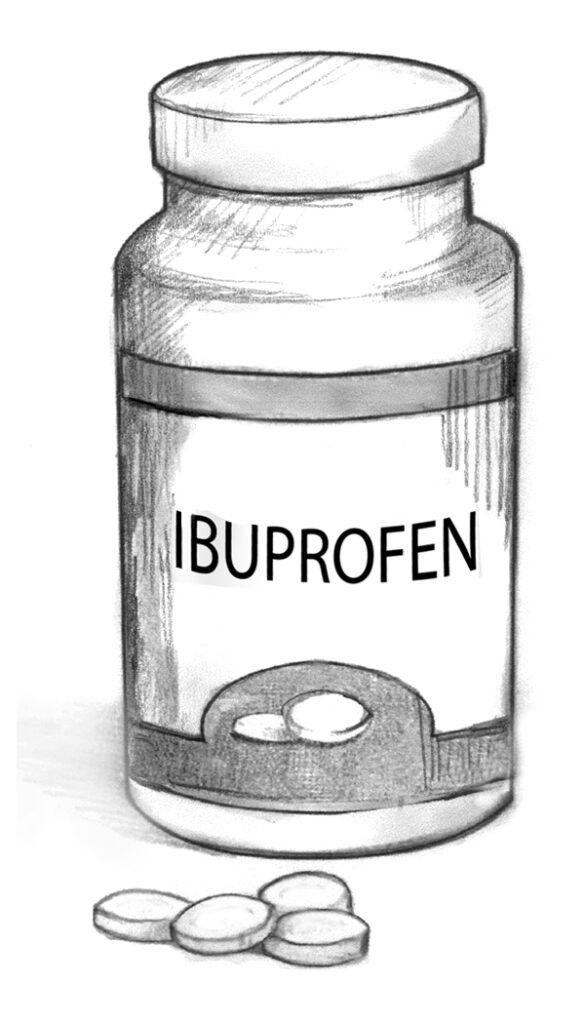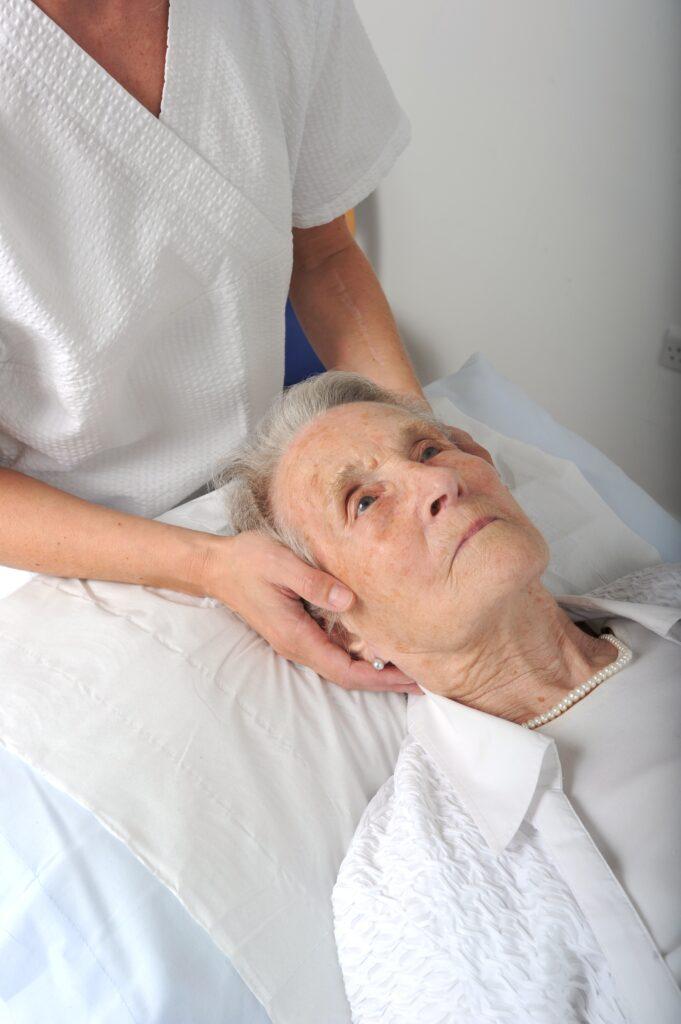
If you’re experiencing pain at the back of the neck and somewhere on the head with all sinister causes having been ruled out, then it’s possible you’ve got tension related neck pain – read on to find out what you might be able to do about it.
Part of the Pain Relief series of blog posts
Neck Pain
Neck pain is common. About 1 in 2 people develop a bout of neck pain at some point in their lives. It is most common in those aged 35-50 years, and it is more common in women than in men.
Nonspecific neck pain
This is the most common type. This is sometimes called ‘simple’ or ‘mechanical’ neck pain. Often the exact cause or origin of the pain is not known. It may include minor strains and sprains to muscles or ligaments in the neck. Bad posture may also be a contributing factor in some cases. For example, neck pain is more common in people who spend much of their working day at a desk, with a ‘bent-forward’ posture.
Symptoms of nonspecific neck pain
Pain develops in your neck and may spread to the shoulder or base of your skull. Movement of the neck feels restricted and moving your neck may make the pain worse. The pain sometimes spreads down an arm, sometimes as far as your fingers and sometimes ‘pins & needles’ develop in part of your arm or hand. This is possibly due to irritation of a nerve going to your arm from the spinal cord in your neck, although there are peripheral entrapment sites for a nerve too (around the upper chest and the arm itself). Tell a us if these symptoms occur, as we will want to check there is no significant pressure or damage to a nerve in your neck.

Prognosis for nonspecific neck pain
The prognosis is usually good in most cases of sudden-onset (acute) neck pain. Symptoms commonly begin to improve after a few days, and are usually gone within a few weeks. However, the time taken for symptoms to settle varies from person to person and can vary depending on their work and social habits. Sometimes, acute neck pain without appropriate management, can develop into chronic neck pain.
Some people develop persistent (chronic) neck pain. If you develop chronic neck pain, the tendency is for the pain to come and go with ‘flare-ups’ from time to time. commonly, this is due to habits that we have and often great changes can be made by changing these habits whilst also having a course of Osteopathy to help make the necessary mechanical adjustments.
Do I need any scans/tests at the hospital?
Not normally, as we will usually be able to diagnose nonspecific neck pain from the description of the pain, and by physically examining you, so in most cases no other scans/tests are needed.
Many people over the age of 50 will show some degree of ‘wear and tear’ / degeneration (medically known as Spondylosis) on an X-ray, without this necessarily being the cause of the pain and so X-rays are less likely to give any useful information unless there are symptoms or signs during our examination to suggest that there may be a more serious underlying cause for the pain.
How can I tell if the pain is due to a more serious cause?
Our assessment and examination process can usually determine whether your pain is nonspecific and not due to a more serious cause. The following are the sort of symptoms that may indicate a more serious problem:
- If neck pain develops when you are ill with other serious health conditions such as rheumatoid arthritis, AIDS, or cancer.
- If the pain becomes progressively worse.
- If the main functions of an arm are affected. For example, weakness or clumsiness of a hand or arm, or persistent loss of feeling (numbness).
*As mentioned, some pins & needles may occur with nonspecific neck pain, however, this is mild and usually goes within four weeks, this is not the same and is less concerning. - If you feel generally unwell and have ‘general’ symptoms such as weight loss or a high temperature (fever).
- If the neck bones (vertebrae) are very tender, this may indicate a bone problem.
- If you develop any problems with walking or with passing urine, this may indicate problems with some pressure on the spinal cord.
Treatments for nonspecific neck pain
Movement
It’s a good idea to try to keep your neck moving as normally as possible, but if it becomes more painful by continuing to move it, then it’s probably a good idea to stop making large movements with it and make an appointment to see us.
Painkillers might give some benefit

If you choose to, the painkillers might be helpful, but how helpful is quite subjective and will depend on what you can have as an individual.
Recent research suggests that Paracetamol has no effect on spinal pain and Non-Steroidal Anti-inflammatory Drugs (NSAIDS) such as Ibuprofen, do very little except cause stomach irritation and intestinal bleeding1.
As we are not doctors or pharmacists, we are technically not allowed to tell you what you should and shouldn’t be having, so you would need to decide that for yourself by looking for advice on the NHS website or seeing your own doctor if they are available.
In some cases, a pain management programme may be offered by your GP to help you control and live with your pain. Chronic neck pain is also sometimes associated with anxiety and depression which may also need to be treated too.
Osteopathy works well – see the evidence via the links below
There is evidence to support Osteopathy helping neck pain: “our best evidence synthesis suggests that therapies involving manual therapy and exercise are more effective than alternative strategies for patients with neck pain”.
There is other evidence supporting Osteopathy as a means of providing pain relief which says “cervical manipulation may provide greater short-term pain relief than a control [control has no manipulation at all]” and was helpful in providing “increased function”. Thoracic manipulation was deemed effective in situations of “acute pain” and for providing “immediate pain reduction in chronic neck pain”.

As an Osteopath, we are highly skilled with both cervical and thoracic manipulation and mobilisation. The article also says that “cervical manipulation and mobilisation produced similar effects on pain, function and patient satisfaction”), meaning that if you prefer not to be ‘clicked’ or if for some medical reason it is considered to be a risk for you to have manipulation, the we can always help with mobilisation (gentle articulation) instead.
Summary
In summary then, there are a few ways you can deal with non-specific neck pain:
- Ignore it and hope it goes away: in reality, this doesn’t work and eventually you end up suffering more, so it really isn’t a long term option
- Move it around a bit without causing too much pain in the process: can sometimes work for those with mild symptoms, but not for severe neck pain as you just won’t be able to move it enough to make much difference
- Pain killers: this is a common option, but not only are they deemed ineffective for spinal pain1, but they can harm you too, for example, long term anti-inflammatory use can cause gut dysbiosis and interfere with the gut microbiome, a complex relationship between bacteria and our own gut which is absolutely critical for good health. Another example is how Aspirin can lead to a hemorrhagic stroke, although an event like this is rare, you should be aware so that you can make an informed decision about your own health. Make sure you read the medication leaflets and if you do decide to go down the route of medicine, take all the advice you can from qualified persons.
- Osteopathy: the evidence for Osteopathy helping non-specific neck pain is well documented and available to view on the NCOR website.
There are very few adverse events (patient reported problems with treatment) and Osteopathy patients have very high satisfaction (93.5%) & improvement (92.8%) scores according to research conducted by NCOR (National Council for Osteopathic Research) with their PROMS (Patient Reported Outcome Measures) study.
Remember that Baks Osteopathy has been helping the people of Maidstone and surrounding areas with pain relief since 2006 and have 5 star reviews to back up their success. Why not check them out here and then if you would like to book in to see us, then you can do that here.
Some paraphrasing from the Patient Info website, except where referenced.

